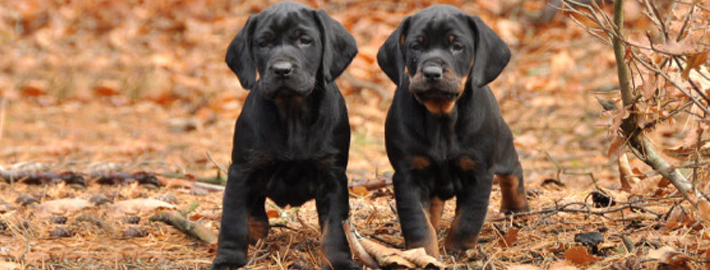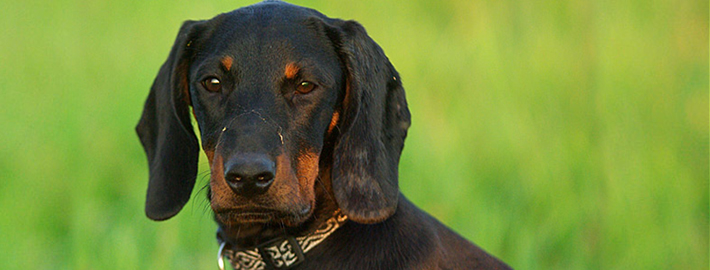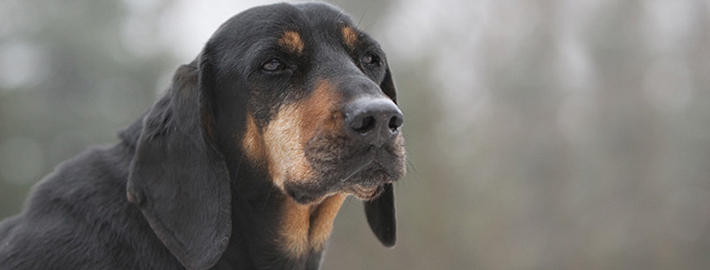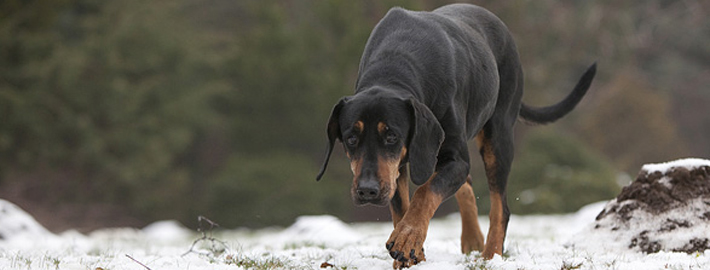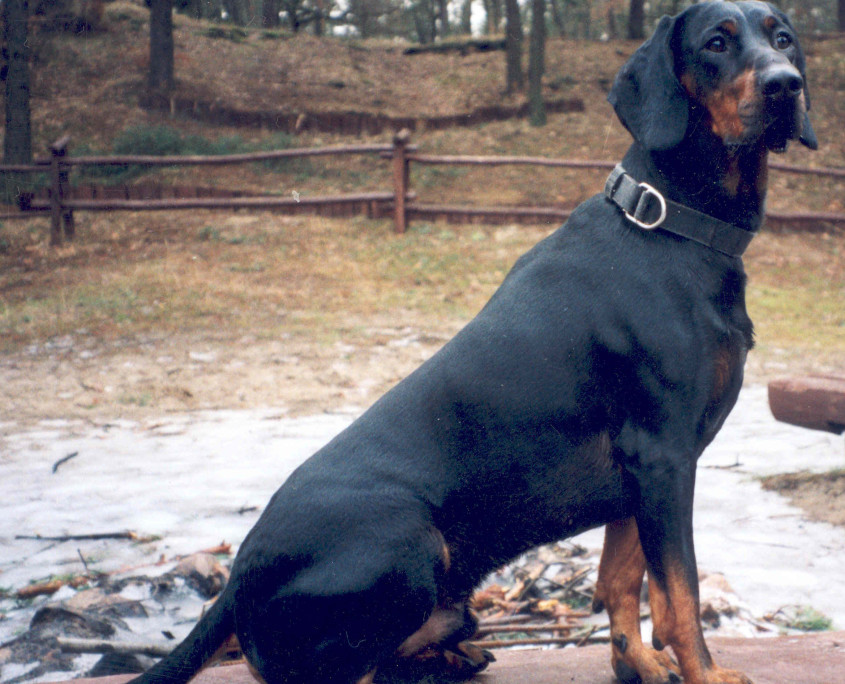What makes the Polish Hunting Dog Unique?
Polish Hunting Dog or Gończy Polski is a breed of scent hound originating in Poland. A lithe dog of compact construction. The bone structure is strong but not heavy. The build implies a great aptitude for mobility and an obvious disposition to resist difficult working conditions in mountainous regions.
Breed Groups
Page Contents
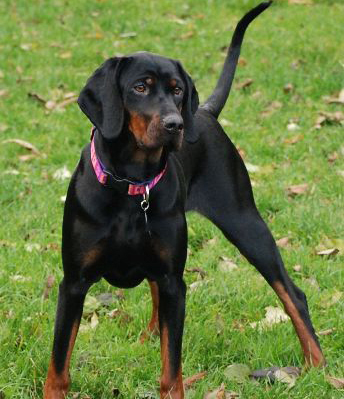
Is the Polish Hunting Dog Right For You?
The Polish Hunting Dog is great, not only for hunting but also for active people. These dog is ideal for those who have an active lifestyle themselves, and who engage in long walks, running, jogging, cycling or horse riding.Hunting dogs don’t have any problems with defeating obstacles in the field. The Polish Hunting isn’t the breed for those who don’t have enough strength for walks or play and think that the garden and bowl are everything that a dog needs.
They are stable and gentle. This dog is truly courageous and can even demonstrate proof of bravery. He is intelligent and very susceptible to training, doesn’t like compulsion. Not aggressive but remaining suspicious towards strangers. Very persistent at work and attached to the members of the family.
In 5 Words
- Brave
- Courageous
- Gentle
- Intelligent
- Trainable
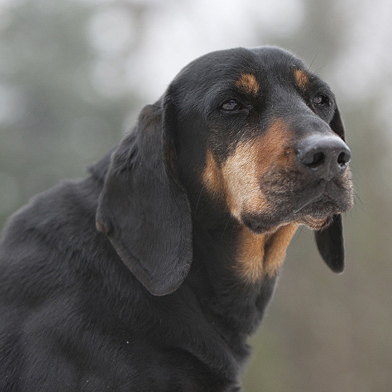
Characteristics
Learn About the Polish Hunting Dog
Description
General Description
Polish Hunting are medium dogs with compact, springy build. Has a massive and proportional portrait. Noble and proportional head, elongated muzzle. Dark-brown eyes, medium size and clearly slanting; black nose; strong, white teeth. Long, light, rectangular, hanging, settled low ears. Medium length, strong, muscular neck with loose skin. Wide and deep chest. Long vertical ribs; straight, muscular back; marked withers. Gaunt, muscular limbs, strong, thick paws. Oblique blade; set low, medium thickness tail. Short hair, hard, stiff and sticked on a trunk; silky hair on head and ears.
The Polish Hunting Dog is great, not only for hunting but also for active people. These dog is ideal for those who have an active lifestyle themselves, and who engage in long walks, running, jogging, cycling or horse riding.Hunting dogs don’t have any problems with defeating obstacles in the field. The Polish Hunting isn’t the breed for those who don’t have enough strength for walks or play and think that the garden and bowl are everything that a dog needs.
They are stable and gentle. This dog is truly courageous and can even demonstrate proof of bravery. He is intelligent and very susceptible to training, doesn’t like compulsion. Not aggressive but remaining suspicious towards strangers. Very persistent at work and attached to the members of the family.
Size
Polish Hunting Dogs measure between 55 to 59 cm (21.7 to 23.2 inches) tall for males and 50 to 55 cm (19.7 to 21.7 inches) for females. They weigh for about 21.8 to 25.9 kg (48 to 57 pounds).
Coat
The coat of a Polish Hunting Dog is water-resistant. The colors are most often red & black, black & tan or brown & tan.
Short History of the Polish Hunting Dog
The ancestors to the Polish Hunting Dog were referenced as early as the 13th century. Poland has a vast amount of large and deep forests, so good scent hounds and tracking dogs were always appreciated here. The Polish Scent Hound, itself, was mentioned in or around 1820. About this same time, a breed standard was first given for these dogs, but they continued to be used primarily as scent hounds and not as show dogs. It was not until Jozef Pawuslewicz (1903-1979) that this breed was refined and developed further.
Temperament
The Polish Hunting Dog is great, not only for hunting but also for active people. These dog is ideal for those who have an active lifestyle themselves, and who engage in long walks, running, jogging, cycling or horse riding.Hunting dogs don’t have any problems with defeating obstacles in the field. The Polish Hunting isn’t the breed for those who don’t have enough strength for walks or play and think that the garden and bowl are everything that a dog needs.
They are stable and gentle. This dog is truly courageous and can even demonstrate proof of bravery. He is intelligent and very susceptible to training, doesn’t like compulsion. Not aggressive but remaining suspicious towards strangers. Very persistent at work and attached to the members of the family.
Caring for Your Polish Hunting Dog
General Health
They are generally a healthy breed, and there have been no medical conditions that are specific to this breed have been reported.
Temperament
Care
Polish Hunting Dogs require little grooming. They are average in shedding and require only brushing to remove dead fur and to maintain the condition of the coat and skin. Because the coat is water-resistant, they should not be bathed often as this could remove the waterproofing quality. If they are used as hunting dogs then they can frequently get thorns or burrs on their feet and coat. Thus, they do need additional brushing after they have returned from such a hunting expedition.
Grooming & Bathing
The Polish Hunting Dog needs little amount of grooming only. They are average in shedding and they only require brushing to remove dead fur and maintain the condition of the coat. They should not be bathed often because of the kind of coat they have.
Exercise & Training
Polish Hunting Dog are use for hunting. They are full of energy and need frequent exercise. They should be walked daily for a long time, or jog behind the human caretaker. It also enjoys some sports, such as fetching.

